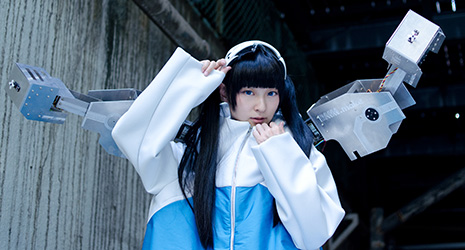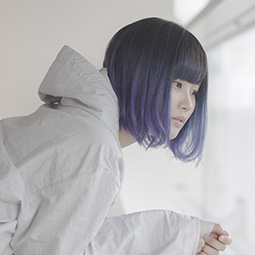Home > Highlighting JAPAN > Highlighting Japan September 2019 > Celebrating Diversity in Culture
Highlighting JAPAN


“Wearing Mecha”
Mechanical engineer Kyunkun is attracting attention in Japan and overseas with her innovative idea of wearing robots as fashion.
Beginning with the comic Mighty Atom which appeared in the early 1950s, the world of Japanese comics and animation has long depicted robots as heroes. This has influenced many researchers and engineers to pursue the path of research and development into robots. In fact, in addition to the industrial robots operating at plants and other locations around Japan, active R&D is underway across a wide range of fields from medicine and nursing care to help with household chores and disaster relief.
Born in 1994, Kyunkun was similarly obsessed with Mighty Atom in her elementary school days, but it is in the development of a robot that is completely different from the conventional robots created with economic or practical aims in mind where she has attracted attention, developing a wearable robot that gives shape to the notion of “wearing mecha” as fashion.
“Perhaps it was because my parents would take me to the National Museum of Nature and Science in Ueno from an early age, but I have always liked science and machines. It was around the fifth year of elementary school when I thought that I actually wanted to be a robot developer. There was a TV program showing the movements and development scenes of a compact robot that walks on two legs known as “Chroino” developed by robot creator Tomotaka Takahashi. When I saw this, I knew I wanted to do that kind of work in the future,” says Kyunkun.
By the time of junior high school, Kyunkun had obtained a soldering iron and started making things from an electronic kit. As a high school student, she joined the “clothing handicraft club” as an extracurricular activity where she worked on making clothing that revolved around technology, such as garments with mechanical components or electronics boards attached. Then in university while studying mechanical engineering, Kyunkun began creating items as a “robotics fashion creator,” culminating in the announcement of the “METCALF clione” wearable robot that combines clothing and robotics in 2016. When the METCALF clione robot is put on, its robotic arms made from aluminum and acrylic appear to extend left and right from the wearer’s back like feathers. The arms can be controlled using a smartphone.
“When they hear ‘wearable robot,’ a lot of people are reminded of a powered suit designed to help with physical tasks, or imagine some kind of body extension, but METCALF is completely different. It’s not a question of practicality, but about what people feel and what they think when the physical distance between human and robot is reduced to zero. I created METCALF out of an interest in those questions,” explains Kyunkun.
METCALF drew the attention of many people through social media and other sources, and invitations to exhibit METCALF were even received from major events overseas. In 2016, METCALF stage, a version designed to be used on the stage, was featured as a costume in a performance by the idol group AKB48. This version was equipped with a motion sensor, with METCALF changing its movements based on the movements of the wearer, such as extending its arms when the wearer spins around.
“When I have asked people for their impressions when they have put on METCALF at exhibition events, a lot of them have said it makes them feel reassured or calm because it’s as if there is an animal close to them,” says Kyunkun.
While continuing her activities as a mechanical engineer, Kyunkun is currently working on her graduate school master’s thesis, in which she is researching people’s impressions when wearing robots. The idea of wearing robots as a fashion statement is an unprecedented experience for humans, and Kyunkun’s creations may herald the beginning of an entirely new relationship between people and robots.
© 2009 Cabinet Office, Government of Japan







